
Steam Car
1815Josef Božek was the first in the Czech Lands to introduce a steam-powered road vehicle in Prague in 1815. It seated two persons and because of the low power of the boiler, it was necessary to make frequent stops. The first steam engine was transported to the Czech Lands from England, but it was not assembled and the individual components were roughly made. This was a task just for Josef Božek. In September 1815, the Prague Royal Park witnessed a historic event – a steam-powered vehicle was put to motion on the European continent. Two years later, Božek presented his vehicle again, this time with the addition of a steam boat (steamer).
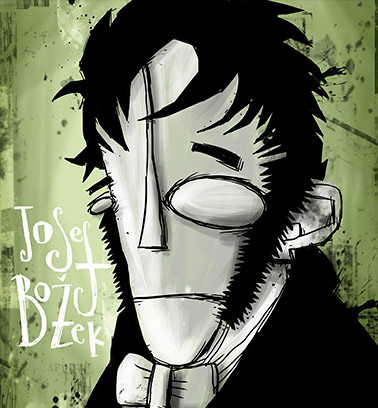
Josef Božek
1782 – 1835Mechanic, constructor, and pioneer of Czech engineering, Josef Božek, graduated from a grammar school in Těšín, where he is believed to have constructed about forty ingenious mechanisms and models. Božek was also a clockmaker at the Prague Polytechnic Institute. He constructed several tower clocks. He is also known for designing moveable prosthetics for the disabled. Furthermore, he occupied himself with constructing pumps for waterworks and later also carriages for the first horse-drawn railway on the European continent. In 1812, he built the precise pendulum clock for the Klementinum Astronomical Observatory. His most significant invention, however, is a two-seat carriage powered by a special drive.

Semtex Explosive
1952SEMTEX is an orange-coloured plastic explosive, which was developed by Stanislav Brebera in 1952. It happened in the Explosia company in Semtín near Pardubice, which is where the name comes from (SEMtín and EXplosia). Serial production of Semtex was launched in the 1960s. The most notorious case of Semtex misuse was the hijacking and destruction of the Boeing 747 aircraft of the PanAm company in 1988. In 1989, a complete ban was put on the export of this explosive. Today, Semtex has been replaced by new types of explosives and the original type is produced in small quantities only, but the Semtex brand remains a legend.
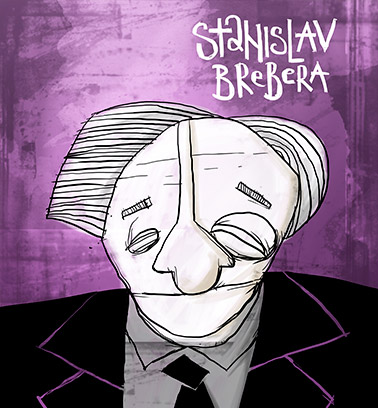
Stanislav Brebera
1925 – 2012Stanislav Brebera was a Czech chemist and native of Přelouč. At the Czech Technical University in Prague, he studied chemistry, which was to become his passion. After graduating from the university in 1950, he was drafted in military service. His superiors noticed his talent and assigned him to a military technical institute, where he was free to pursue his research. After that, he worked for the Synthesia chemical company, later a national industry. In 1952, in the Czechoslovak Research Institute for Chemical Industry, he invented something that literally shook the world.
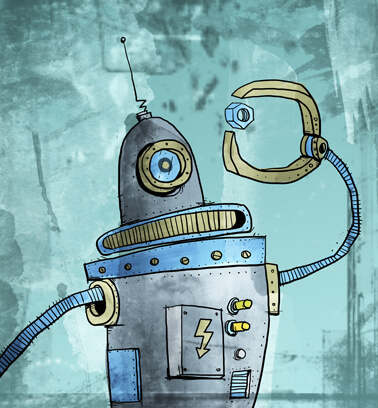
The Word Robot
1920The word robot is of Slavic origin and is derived from the verb robotovat, that is, to work. The authorship of this term, which spread worldwide along with the play R. U. R. – Rossum’s Universal Robots (1921), is attributed to Josef Čapek. He suggested this word to Karel when visiting Trenčianske Teplice. Karel Čapek originally planned to use a different word, “laboři”. Robots play a major role in Čapek’s play and caution against the adverse effects of technology on the humankind.
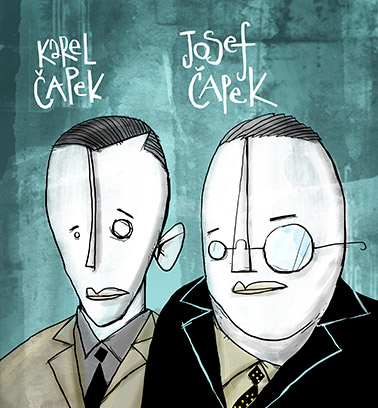
Josef Čapek and Karel Čapek
1887 – 1945 / 1890 – 1938Karel Čapek was a major Czech writer, journalist, playwright, and translator. His best-known books include the novels War with the Newts or Krakatit and plays such as Mother, R. U. R. (Rossum’s Universal Robots), and The White Disease. His brother Josef Čapek was a painter, graphic designer and illustrator, and stage designer at the National Theatre in Prague. He was also a writer, playwright, art theorist, and critic. Brothers Josef and Karel Čapek were members of influential artistic and cultural-political associations: Fine Arts Group, Fine Arts Association Mánes, and Friday Men.

Lightning Rod
1754A lightning conductor, or lightning rod, is a device which creates an artificial conductive path to attract and conduct the lightning strike to ground. In the Czech Lands, Prokop Diviš was the first to construct this device in 1754. The lightning rod consisted of a wooden mast covered in metal sheets and studded with several hundred metal spikes at the top. The mast was docked to the ground with three chains attached to conductive iron cones grounded in the earth. The intention of the inventor was for the device to absorb electric charges from clouds and generate nice weather. Instead, during storms, the device conducted lightning into the ground.
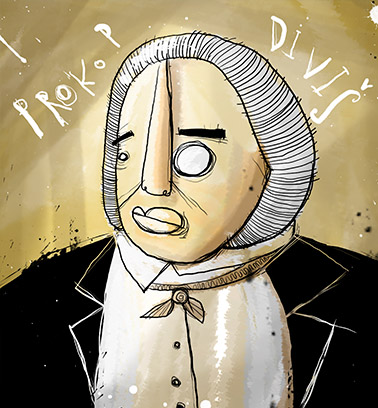
Prokop Diviš
1698 – 1765Roman Catholic priest Prokop Diviš was a Czech natural scientist, musician, healer, and inventor. He studied at the Latin School in Znojmo, where he later became professor of philosophy. He also served as a lecturer of theology in the Louka monastery. His scientific experiments were mostly focused on hydraulic engineering and static electricity. He constructed an electric musical instrument, known as The Golden Dionysus, which imitated the sounds of the piano, clarinet, harp, horn, bassoon, lute, bell chimes, and even the human voice. His invention dubbed the Weather Machine served to protect buildings from lightning strikes.
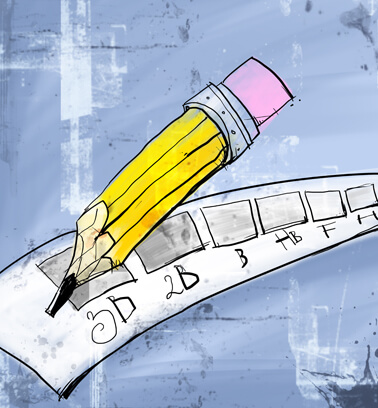
Mechanic Pencil
1890Mechanic pencil is a pencil that allows for the lead to be replaced. The invention of the mechanic pencil is ascribed to Franz Hardtmuth. The mechanic pencil is a product of the České Budějovice company KOH-I-NOOR HARDTMUTH. It was launched in the marked in 1950 as the Versatil mechanic pencil, but the first mechanic pencils were manufactured by KOH-I-NOOR already in 1890. The Versatil mechanic pencil is a lead holder which enables to replace the lead, whether of a different hardness or colour. The pencil comes with a pencil sharpener. The classic mechanic pen could write a line 56 km long.
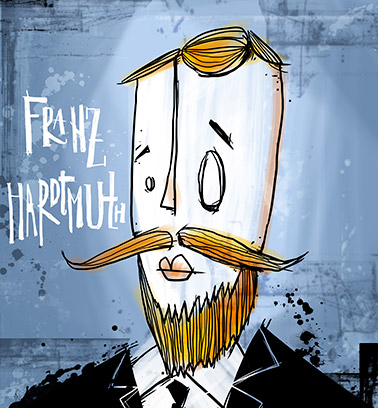
Franz Hardtmuth
1832 – 1896Franz Hardtmuth was a member of the renowned Hardtmuth family. He graduated from the Polytechnic Institute in Vienna and studied machinery engineering in England. He left his mark on the history of the KOH-I-NOOR HARDTMUTH company when he introduced modern technology enabling the production of graphite pencils ranging from soft to hard. The hardness scale is denoted by a combination of numbers and letters H (Hardtmuth) and B (Budějovice), or F (Franz Hardtmuth). Another of his significant contributions to the family business was a device known as the “pencil lead holder”.

Polarography
1922Jaroslav Heyrovský discovered polarography and was the first to present it in scientific publications in 1922. Polarography is an electrochemical method that monitors the dependency between the generated current and voltage, using a system of two mercury electrodes. The current generated from the electrolysis of a solution held in a container is caused by the reduction or oxidation of the solution components on mercury electrodes. The dependency between the current and the voltage conveys information about the type of substances in the solution and their quantity. For his discovery and development of the polarography method, he received the Nobel Prize for chemistry in 1959.
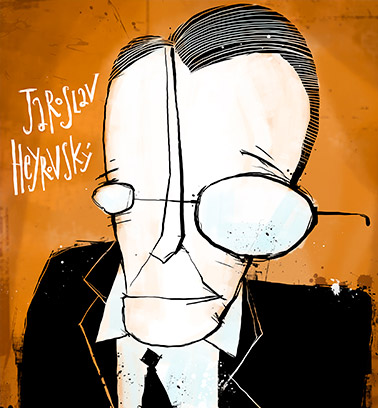
Jaroslav Heyrovský
1890 – 1967Jaroslav Heyrovský was a Czech physicist, chemist, scientist, and inventor. He obtained a bachelor’s degree in natural sciences from University College London and focused on electrochemistry in his postgraduate studies. After graduation, he continued his research at the Faculty of Natural Sciences of Charles University, where he was appointed Professor of Physical Chemistry in 1926. In 1950, he became the head of the newly founded Polarographic Institute, one of the first in the Academy of Sciences. He discovered and developed a new branch of physical chemistry, for which he was awarded the Nobel Prize for chemistry in 1959.
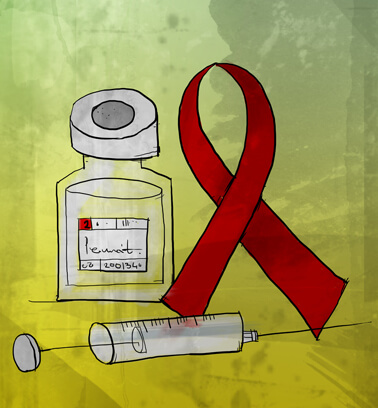
AIDS Medicine
2001The invention of AIDS medicine, or antiviral drugs, is ascribed to the Czech chemist Antonín Holý. In 2001, a drug for the treatment of AIDS sold under the name Viread was approved for use, and in 2008, the same drug was approved for the treatment of hepatitis B. The HIV virus cannot be cured even today, but the treatment is significantly more effective than it was in the 1980s, when the virus appeared. In the least, antivirals relieve the symptoms of the fatal disease. A red ribbon is an internationally recognised symbol of solidarity with patients infected with HIV or suffering from AIDS.
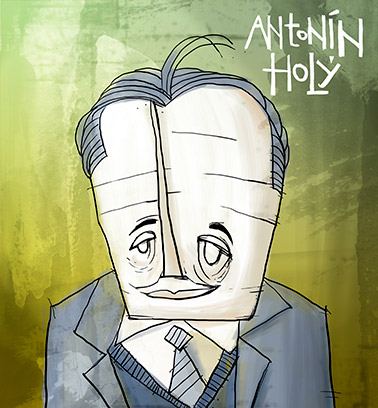
Antonín Holý
1936 – 2012Professor Antonín Holý was a Czech chemist and one of the greatest Czech natural scientists of the twentieth century. He synthesised a number of new compounds derived from nucleic acids. These are used as drugs to treat cancerous, viral, and metabolic diseases. He was member of the Learned Society of the Czech Republic and one of the most cited scientists of his time. He also authored and co-authored sixty patents. His greatest contribution is the discovery of antiretroviral drugs. They are used to treat cold sores, hepatitis B, or one of the almost always incurable and terminal diseases.

Photolithography
1868Jakub Husník used photolithography for the first time in 1868. It is one of the earliest printing methods, along with letterpress printing or wood engraving. Photolithography uses printing slides made from smooth thick glass. The slides are coated with a layer of chrome gelatine, and once the layer is dry, a photographic negative is copied on it. The gelatine absorbs colour in areas that are toughened by light and repels colour in areas that are soaked with water. The printing was slow, but its advantage was that it retained the tiniest details of the original and the negative.
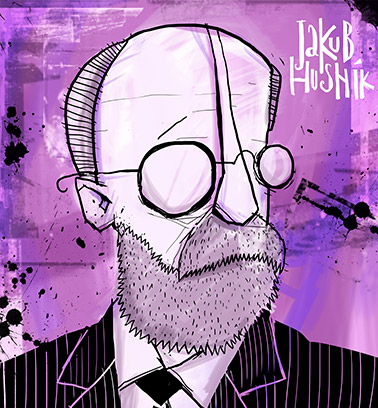
Jakub Husník
1837 – 1916Jakub Husník was an influential Czech painter, graphic designer, photographer, printer, and inventor. His inventions led to the improvement of the photolithography method, including glue printing blocks (1885), gelatine printing blocks for water-based stamps (1888), and innovated three-colour reproduction for print (1893). After secondary school, he studied at a painter academy, where he met Karel Klíč, who was to become the inventor of photogravure. This friendship, combined with Husník’s artistic inclinations, gave rise to a type of printing technique that uses light.
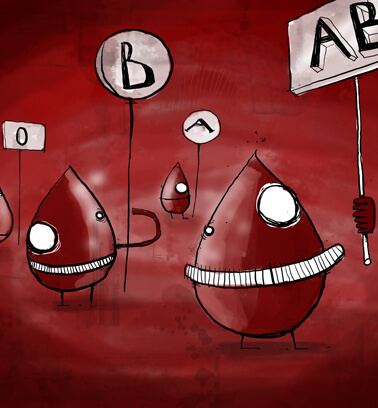
Blood Groups
1907The first to describe all the four blood groups (A, B, AB, and 0) was Jan Janský in 1907. A blood group, or blood type, describes the characteristics of human red blood cells, that is, carbohydrates and proteins on their cell membrane. A transfusion of a different blood group would lead to the donor rejecting the blood and would cause health problems, which could lead to death. The most common blood type in the world is 0, while the AB type is the least common. In the Czech Republic, the most common blood type is A.
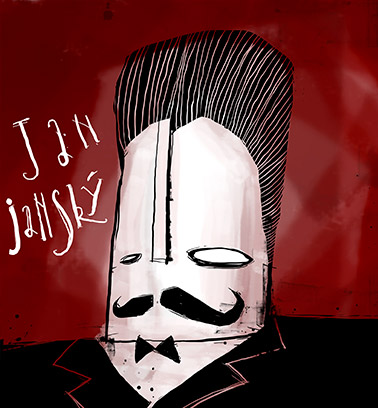
Jan Janský
1873 – 1921Professor Janský was a Czech neurologist and psychiatrist. He obtained his medical degree from Charles University and from 1899, he worked at the psychiatric clinic. In 1914, he was appointed professor. After suffering a heart attack in 1916, he was relieved of duty and went on to work as a neuropsychiatrist in the Central Military Hospital in Prague. He was a pioneer of biochemical and serological methods in psychiatry. His extensive research of blood clotting led to establishing a safe environment for blood transfusion. This step has been carried out by all physicians prior to performing transfusions ever since.
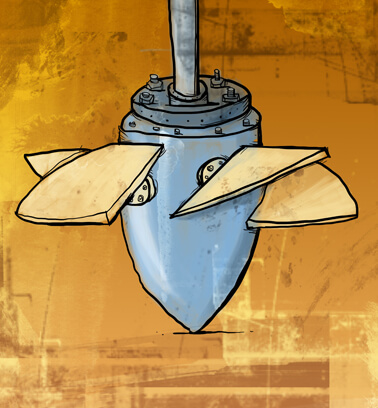
Kaplan Turbine
1912The invention of the Kaplan water turbine with adjustable rotating blades dates back to 1912. It was patented only in 1920. A water turbine is a rotary mechanical machine that converts kinetic energy, or motion or potential energy, of water into mechanical work. The blades of the turbine can be adjusted according to the changing water flow so as to achieve the optimal angle of the flow. It is now among the most commonly used types of turbine in the world. In the Czech Republic, Kaplan turbines are used in many water power plants, among the largest being Orlík, Slapy, Štěchovice, and Vrané.

Viktor Kaplan
1876 – 1934Austrian engineer, constructor, and inventor. He spent most of his career in Brno, where he trained new generations of Czech engineers. He devoted his life to engineering, particularly measuring the flow gradient in different types of turbines. His research resulted in a discovery of global importance. He adjusted the turbine wicket gates to build a mechanism resembling a propeller with rotating blades. This ingenious invention makes it easier to obtain energy from water resources. The invention was named in honour of its inventor.

Motion of Celestial Bodies
1609 – 1618Kepler’s three laws of physics describe the motion of planets around the Sun. The first two laws were published by Johannes Kepler in 1609, the last one in 1618. The first law describes that planets follow an elliptical or circular trajectory around a fixed centre. The second law says that the orbital speed of planets decreases with the increasing distance from the Sun. The last law concludes that planets closer to the Sun complete a full orbit in a shorter time than planets farther away from the Sun.
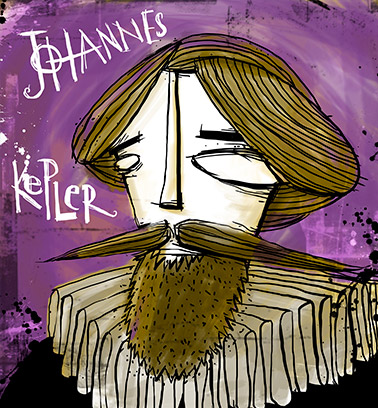
Johannes Kepler
1571 – 1630Johannes Kepler was an influential mathematician, physicist, astrologer, and astronomer. He worked at the Prague Astronomical Observatory, where he kept daily weather records to verify his previous astrometeorological forecasts. Based on his findings, he tried to define mutual dependencies. His work on the crystallography of snowflakes belongs among the world’s pioneering writings on the physics of clouds and precipitation and marks the beginnings of crystallography. In 1605, he discovered that the trajectory of planets in space is elliptical, which led to the discovery of laws that schoolchildren are taught to this day.
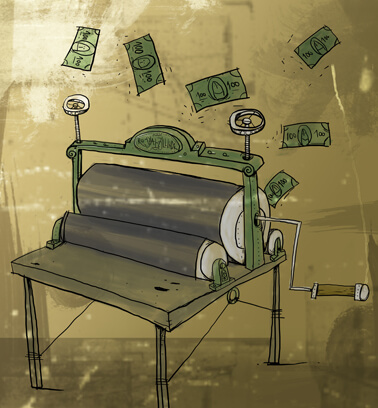
Intaglio Printing
1890Photogravure is an intaglio reproduction technique invented by Karel Klíč in 1890. The precursor of the invention was heliogravure (1878). The image to be etched was divided into small squares, creating a grid. Photogravure was the most sophisticated reproduction technique for drawings, paintings and photographs in the twentieth century. Colour intaglio printing was achieved by combining four colours (blue, yellow, red, and black). Intaglio printing is used today for high-quality image reproduction, especially in high volumes (newspapers, magazines, catalogues, etc.).
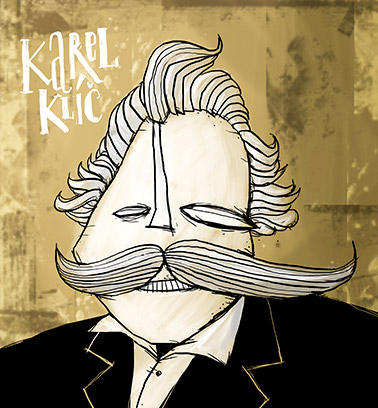
Karel Klíč
1841 – 1926Karel Klíč was a Czech painter, photographer, and graphic technician. He graduated from a painting academy in Prague. In 1863, he founded a lithography workshop in Prague and in 1864, he established a photographic studio in Brno. He also founded his own satirical magazine called Humorous Papers, to which he contributed with caricatures. In 1878, his efforts to find a cheaper and faster way to reproduce images were rewarded and he managed to improve the heliogravure technique significantly. The heliogravure process, or intaglio printing, was then further improved to photogravure, and received the name that we still use today.
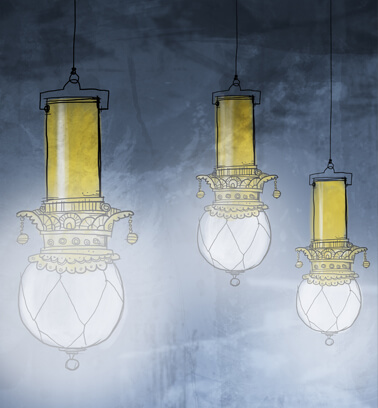
Arc Lamp
1878The arc lamp is an electric source of intense light, where light is emitted by an electric arc burning between two electrodes. For his invention of the arc lamp, Křižík was awarded the golden medal at the first International Electrical Congress in Paris in 1881. Despite a bitter fight for the patent with the Siemens and Halske company, Křižík succeeded in keeping the patent for the Czech Lands and was authorised to keep on selling it. Křižík’s arc lamp changed the public lighting system all over the world.
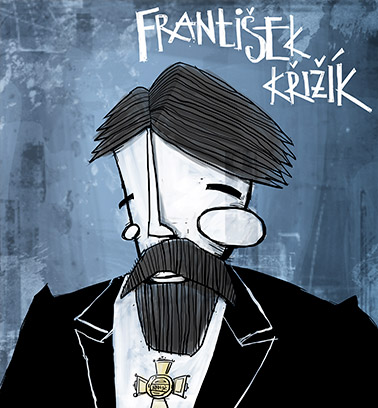
František Křižík,
1847 – 1941František Křižík, dubbed the Czech Edison, was a major electrical engineer and inventor. In 1888, he erected in the Prague district of Žižkov the first power plant in the Czech Republic. In 1891, he put into operation the first electric tramway in Prague. The success of the exhibition was cemented by his electrically lit fountain, a giant reflector, exhibition lighting, etc. He was the first in the country to make and test in real life the electric vehicle (postal vehicles). His most famous invention revolutionised public lighting.
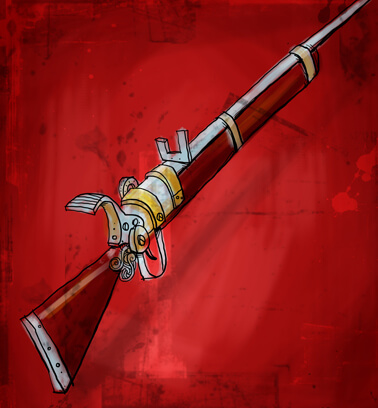
Breech-Loading Rifle
1849A breech-loading rifle is a firearm that loads from the back, by inserting the cartridge into a chamber which closes and locks with a breech-block. It was constructed in 1849 by the Czech gunsmith Sylvestr Krnka. His firearm became the only breech-loading rifle in the army in the world. The inventor continued to improve the weapon by ingeniously increasing the speed of the projectile and adding a new metal shell. His invention was rejected in his native Austria-Hungary, but the breach-loading rifle was immensely popular abroad and used in many wars. Armies used this rifle until the introduction of repeating rifles, which were able to fire several shots in a row.
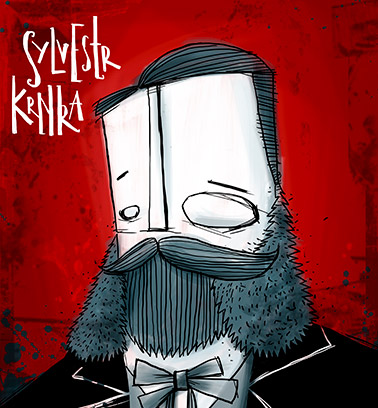
Sylvestr Krnka
1825 – 1903Sylvestr Krnka, Czech gunsmith and inventor, influenced the development of handguns on a global scale and was ahead of his competitors by at least half a century. He constructed a handgun which was the only one to be charged from the back by inserting the cartridge directly in the chamber. To start with, in 1849, he constructed a rifle which was charged from the back with paper cartridges. Later, in 1855, he designed centerfire cartridges for use in rifles. This breech-loading firearm changed the shooting style especially in war strategy at the end of the nineteenth century.

Mach Number
1877Mach number expresses the ratio of the speed of a moving object to the speed of sound. This number is used worldwide to express values of supersonic speed and is named for the eminent physicist Ernst Mach. It is usually expressed with the letter M. The equation for the calculation of the dimensionless number is: v ÷ c, where v is the speed of the moving object and c is the speed of sound in a given environment. The Mach number characterises a dimensionless physical quantity used in aerodynamics. It determines the ratio of the speed of an object moving in a particular environment to the speed of sound in the same environment.

Ernst Mach
1838 – 1916Ernst Mach (also known as Arnošt Mach) was a theoretical physicist, philosopher, dean, and later rector of Charles-Ferdinand University. He discovered the shock wave, which is an area of discontinuity of physical quantities describing the state of the environment. His views on the nature of space and time contributed to the formation of the theory of relativity during Einstein’s stay in Prague. A number of physical quantities and concepts bear his name. His greatest achievement is the description of a dimensionless physical quantity used in aerodynamics, which bears his name.

Laws of Heredity
1865Mendel’s laws of heredity were first presented in 1865 and a year later published in a book form. Mendel’s laws describe the basic principles of the inheritance of traits by the offspring from the parents. Johann Gregor Mendel formulated three basic laws of genetics. The first law (of equal segregation) concerns the crossing of white flower and purple flower pea plants. The second law (of splitting traits) states that traits are inherited as pure and do not mix with opposing traits. And the third law (of independent assortment) explains that individual traits can be freely combined.
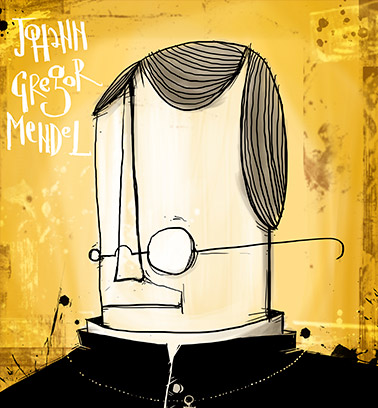
Johann Gregor Mendel
1822 – 1884Johann Gregor Mendel was Darwin’s contemporary, founder of genetics, natural scientist, professor of biology and physics, monk, and then abbot of the Augustinian Saint Thomas Monastery in Brno. He was one of the first to use biostatistical methods in his work. Starting from 1862, he accurately recorded daily meteorological observations for the Institute of Meteorology in Vienna. He also experimented with the crossing of plants (especially various forms of pea) and kept accurate notes. The result of this research was a large sample of statistical data concerning the external characteristics of hybrids. These principles are still taught at schools.
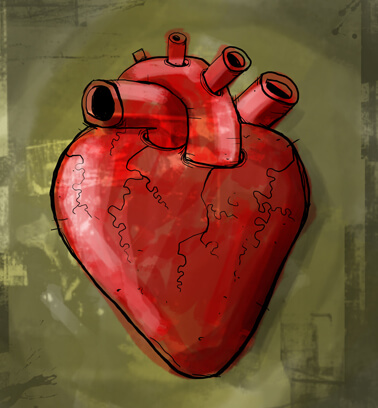
Purkinje Fibres
1839Jan Evangelista Purkyně discovered these fibres as the first of the whole cardiac system. Purkinje fibres are located in the heart muscle, specifically in the heart chambers as the outermost extension of the system. This determines heart activity, that is, systole (contraction of the heart muscle) and diastole (the interval between two contractions). Purkinje fibres are composed of muscle cells. Because of the direction of Purkinje fibres, contractions spread from the tip of the heart to the base of the heart, which pumps blood into the aorta and the pulmonary artery trunk, so that the left and the right heart chamber are emptied.
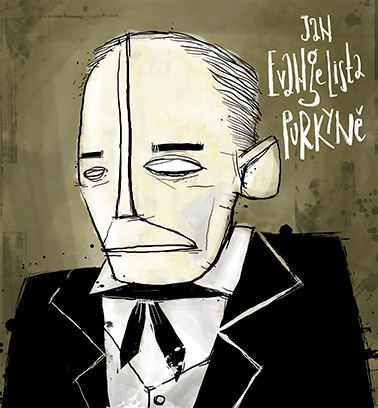
Jan Evangelista Purkyně
1787 – 1869Jan Evangelista Purkyně was a Czech physiologist, anatomist, physician, poet, and philosopher. He is regarded as the most famous Czech natural scientist of the nineteenth century. He studied the anatomy of the eye, the mechanism of digestion, and particularly blood circulation and breathing. His major achievements include the formulation of cell theory. He was one of the founders of cytology. In 1841, he constructed a kinetoscope, which enabled to present a simple image animation. His animated presentations of the beating heart and blood circulation are well-known. A part of our body, specifically a part of the heart muscle, is named for him.
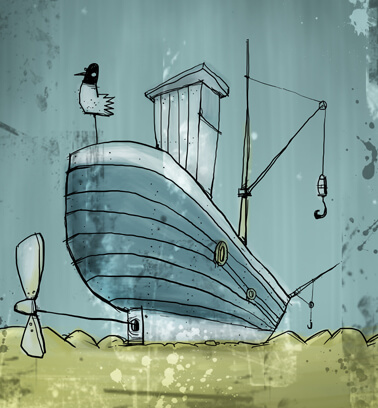
Propeller
1826The Czech-German engineer Josef Ressel boasts the invention of the propeller, which he invented in 1826. He had it patented a year later. The first working propeller was constructed by J. Ressel. Unlike dozens of his predecessors, he constructed a propeller of an appropriate shape and size and, also among the first, he placed the propeller horizontally under the stern in front of the rudder. During the second half of the nineteenth century, the propeller gradually replaced paddle steamers. The main reason was the greater efficiency of the propeller. Propellers of varying blade numbers and sizes are produced to this day.
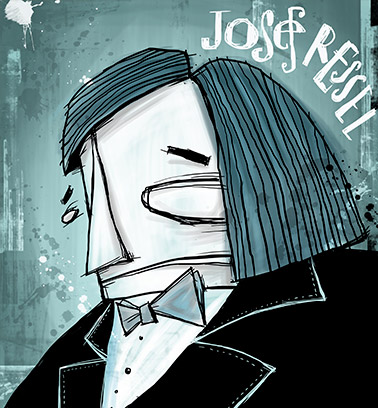
Josef Ressel
1793 – 1857Josef Ludvík František Ressel Czech engineer and inventor. He invented many practical items, such as a screw press for wine and oil, pneumatic tube mail, windmill with vertical shafts, an easy-to-operate plough, cannon mount, steam carriage, and optical telegraph. He also developed proposals for the use of iron in ship and bridge construction. In 1820, he travelled to Trieste, where he conducted experiments with what was to become his most famous invention – first with models and then, in 1829, with an actual ship. The contribution of his invention is internationally acknowledged up to the present.
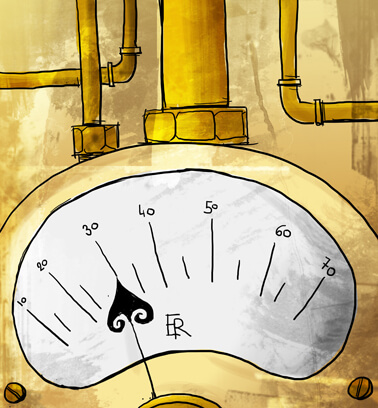
Automatic Regulator of Steam Boilers
1921The inventor of the automatic regulator of steam boilers is Erich Roučka. This device allows to control the supply the steam from the boiler to the steam engine. It was typically used for steam locomotives and other machines which required to shift performance from high to low and vice versa fast. Steam regulators used a valve – steam pressed the valve from above, while the valve sealed the opening. Adjusting the valve allowed to partially uncover the opening and regulate the flow of steam. With the permission of Karel Čapek, he started to use the ER ROBOT brand name for his invention.
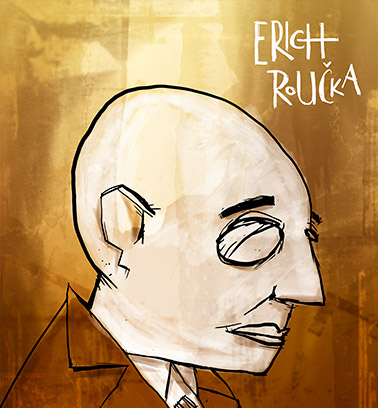
Erich Roučka
1888 – 1986Erich Roučka, nicknamed the “Moravian Edison”, was a Czech electrical engineer, inventor, and entrepreneur. He holds about 850 patents. In 1911, he established the Electrometer workshop in Blansko, where he was one of the first in Europe to start manufacturing electrical measuring instruments. During his travels in the USA, he gained a lot of experience and even had the chance to discuss his ideas with Thomas A. Edison. In 1595, he emigrated to Germany and worked at the development department of the AEG company. His greatest invention allows steam boilers to automatically regulate and release steam.
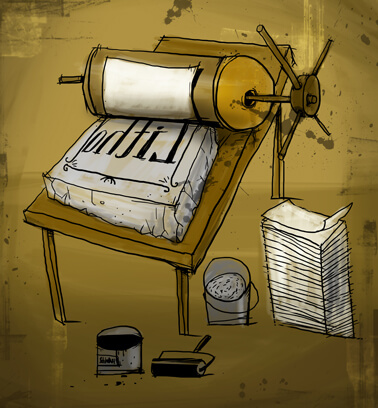
Lithography
1796Lithography is a reproduction printing technique invented in 1796 by Alois Senefelder. Lithography (literally meaning “printing from stone”) uses a lithographic limestone that is perfectly flat and smooth. The procedure consists in transferring ink from the lithographic limestone directly onto the printed material, using oily chalk or lithographic ink. The image drawn on the limestone retains the oil-based printing ink, while the rest of the surface repels the grease. This technique is used today only as an artistic medium.
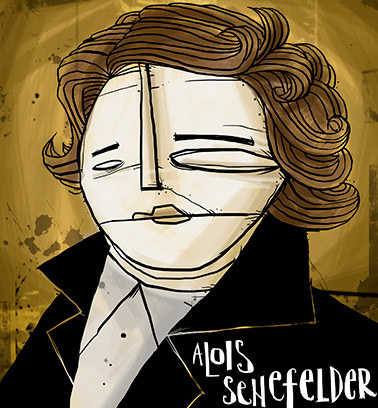
Alois Senefelder
1771 – 1834Alois Jan František Senefelder was an inventor, graphic designer, writer, actor, and lawyer. His parents were both actors, and the family had a nomadic lifestyle. When he became an actor, Senefelder had a first-hand experience of the difficulties connected with copying texts and musical scores, so he decided to find an easy and cheap way to print materials. At the various theatre stops, Senefelder struggled with timely and cheap printing of plays and posters. A legend has it that his first print was a laundry list written on a window sill, which solved problems with copying texts for everyone.
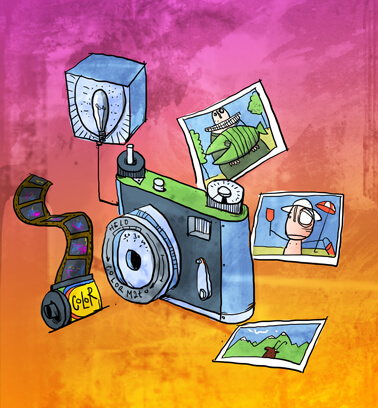
Colour Photography
1905In 1905, Karel Schinzel submitted a patent application for a process he called “catachromy”. The procedure enabled to develop colour images on photographic material consisting of three sensitive layers. Colour photography uses media capable of conveying colours which are chemically produced during the photography development process. Water colours, oils, and other types of colours were used in the process. In 1963, the Polaroid company developed emulsions enabling to produce colour images which did not require further processing, as the image appeared a few minutes after the exposition.
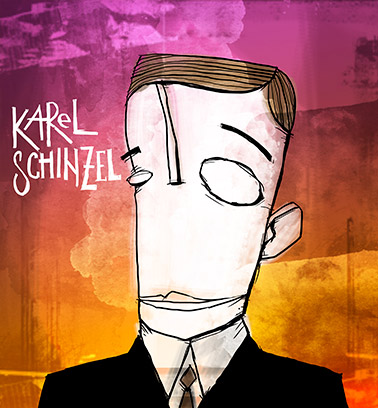
Karl Schinzel
1886 – 1951Karl Schinzel was a Czech photographer, engineer, chemist, and inventor, who was concerned with reproduction techniques and sound film. He was interested in the chemical processes when developing photographs. He set up a private laboratory, where he spent most of his free time experimenting with photographic development. He studied the subject in English, German, and French journals about chemical and photographic procedures. Schinzel helped us to see the world in colours.
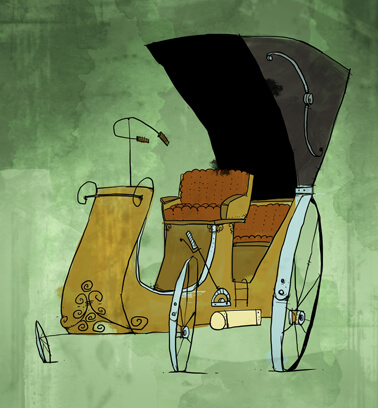
Passenger Car
1897The NW Präsident was the first factory-produced serial car in the Czech Lands and one of the first cars in the world. The car was the brainchild of Leopold Sviták, who led the construction project in 1897. The vehicle was manufactured by an automobile factory in Kopřivnice, then called NW, today known as Tatra. A novelty of the car was the protection of front wheels with bumpers. Two-stroke engine with a volume of 2 714 l and power of approximately 5 kW at 600 rpm. Fuel tank with a capacity of 23 l. An interesting feature were also the 36 gears. The vehicle did not have a steering wheel and was steered with handlebars, such as today’s bicycles.
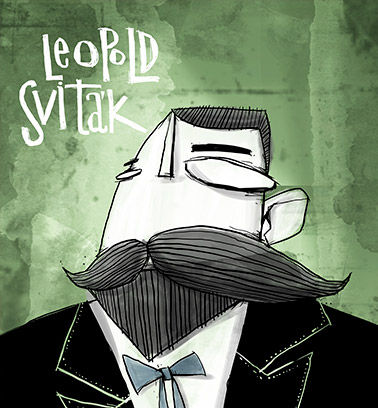
Leopold Sviták
1856 – 1931Leopold Sviták was originally a saddle maker, locksmith, and later a major engineer. He attended the elementary school in Hukvaldy at the same time as Leoš Janáček. He was apprenticed to a locksmith in Kroměříž. At the age of twenty-one, he became a master locksmith at the Prunner company in Vienna. Then he started working at the Schustal company in Kopřivnice as a foreman and later as the head of the engineering, locksmith, and blacksmith workshops. Most people cannot imagine their life without his invention.
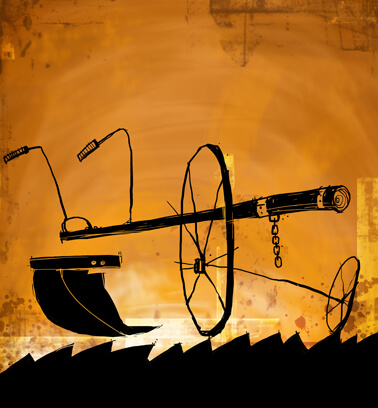
Turnplough
1827This is a special kind of plough. Cousins Václav Veverka and František Veverka improved the earlier hoe used for ploughing and constructed a new type of turnplough with a cylindrical blade. Unlike the original plough, in the new type, the chisel and mouldboard were forged from a single piece. The blade was efficient in turning, breaking, and loosening the soil. Working with a turnplough was less strenuous then working with the earlier hoes, and less thrust was needed to operate it. The Veverka cousins first used their turnplough in 1827 in the Lhota pod Libčany village. In 1849, the first factory to manufacture these turnploughs was that of H. F. Eckert in Berlin; by 1880, about one million pieces had been manufactured.
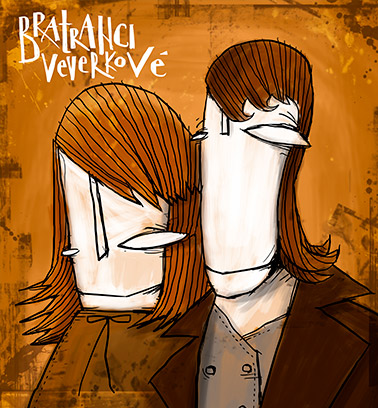
František Veverka and Václav Veverka
1799 – 1849 / 1790 – 1849Cousins František and Václav Veverka are famous Czech inventors who came from Rybitví. František was a farmer and Václav was a blacksmith; both spent their whole life in the countryside, where they supported themselves as farmers. Together they constructed and improved a tool that sped up the transition from the three-field system to the seed system, which significantly contributed to the effectiveness of agricultural production. Although their invention, which was developed between 1824 and 1827, became high in demand, the cousins did not gain any profit. Their invention is colloquially known by the name of its inventors.
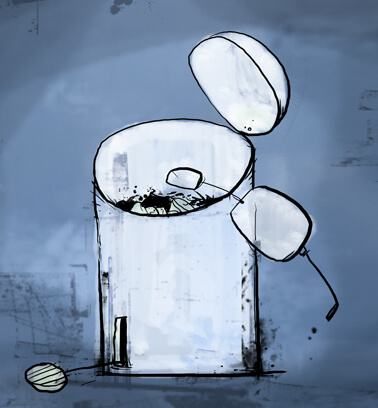
Contact Lenses
1952Soft contact lenses invented by Otto Wichterle in 1957 are optical aids used most often as a substitute for prescription glasses. Hard contact lenses made of glass or plastic were sporadically used as early as before the First World War. Their disadvantage was that they could only stay in the eyes for a short time. At Christmas in 1961, Wichterle used the children’s metal construction kit Merkur to make the first prototype of a centrifugal device powered by a bicycle dynamo. He used this prototype to produce the first four highly regular lenses which did not irritate the eyes.

Otto Wichterle
1913 - 1998Professor Otto Wichterle, renowned scientist, chemist, and inventor, started his research career under the supervision of Emil Votoček, one of the creators of chemical nomenclature. In 1936, he was awarded a doctoral degree in technical science. O. Wichterle is regarded as the founder of macromolecular chemistry in the Czech Republic and the world. He devoted his scientific career to working in the field of hydrogels. He discovered an artificial polyamide fibre – nylon, which is still used today to produce nylons. Another type of hydrogel was used for an invention which enables people to dispense with glasses.

Two-Piece Swimsuit
----The two-piece swimsuit pictured here is but one of the many inventions ascribed to Cimrman. Let’s name at least some of them: the airship, the flywheel of the women’s watch Piccolo, the button on the sleeve of Edison’s first light bulb (known by Cimrman’s first name), dentures called the Happy Railroadman, the method of sweeping manure with explosives, dynamite, a device to stick stamps on letters, a container to transport the Gouda cheese, ornithological binoculars, a bra for female acrobats, the Panama Canal project, mail delivery by field artillery, an original way to transport miners from the mine to the surface, the Wiener schnitzel, etc.
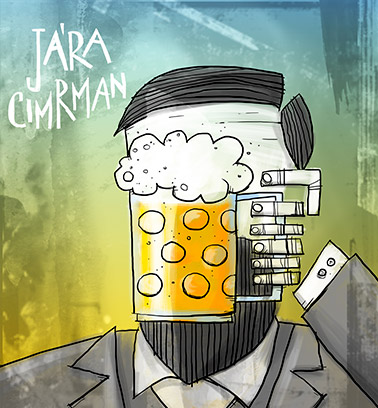
Jára Cimrman
? – ?Jára Cimrman was born in Vienna sometime between 1853 and 1859 (the registrar’s uncertain handwriting suggests that other years are also possible). He regarded himself as a Czech citizen, as evidenced by the last entry in his journal, where he expresses his desire “to see his Böhmen homeland”. He was one of the greatest Czech playwrights, poets, musicians, teachers, travellers, philosophers, inventors, criminologists, and sportsmen of his time. Unfortunately, he applied for patents with his ground-breaking inventions mostly a little later than other inventors. He safely managed to be the first to register one of his inventions.
 CS
CS